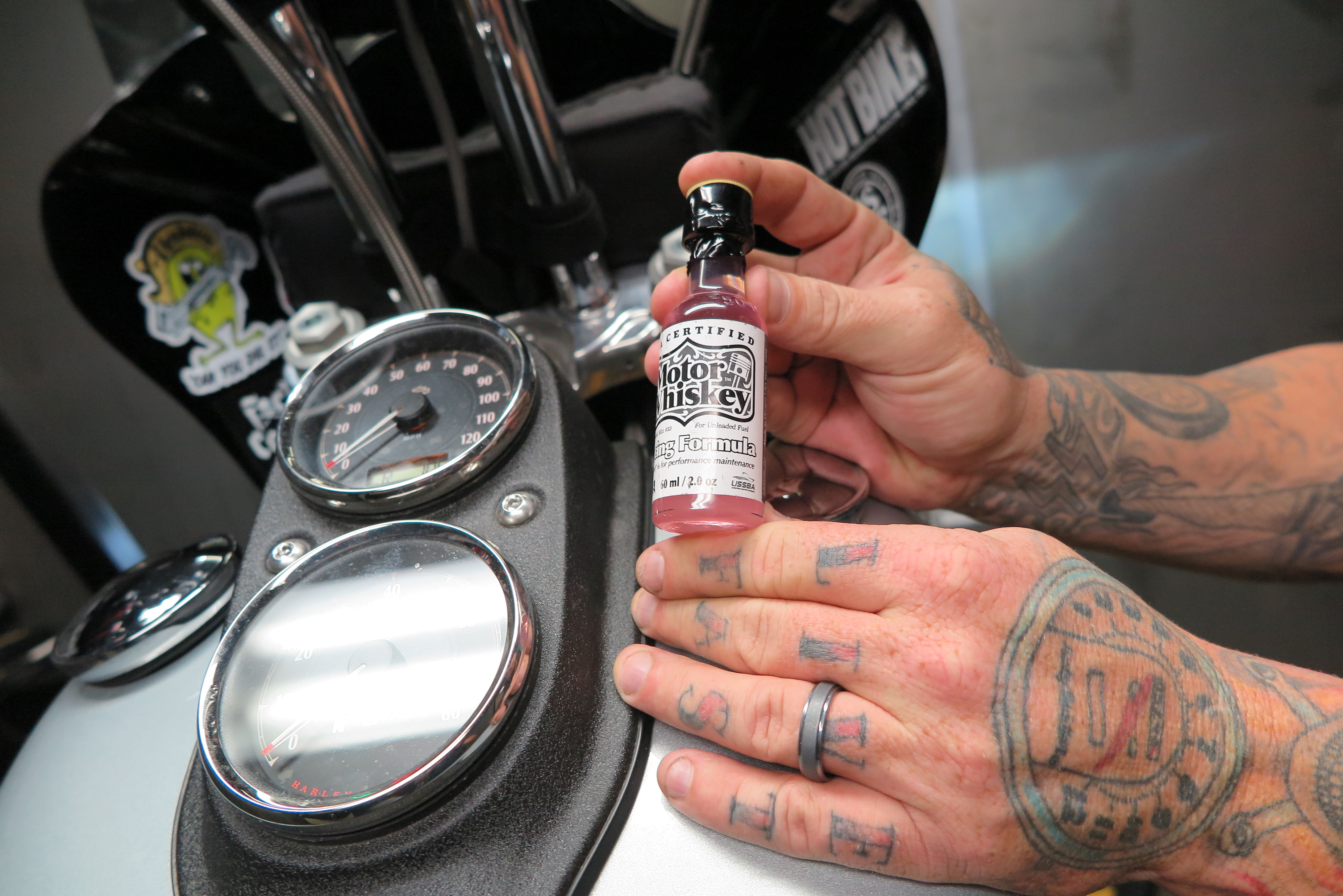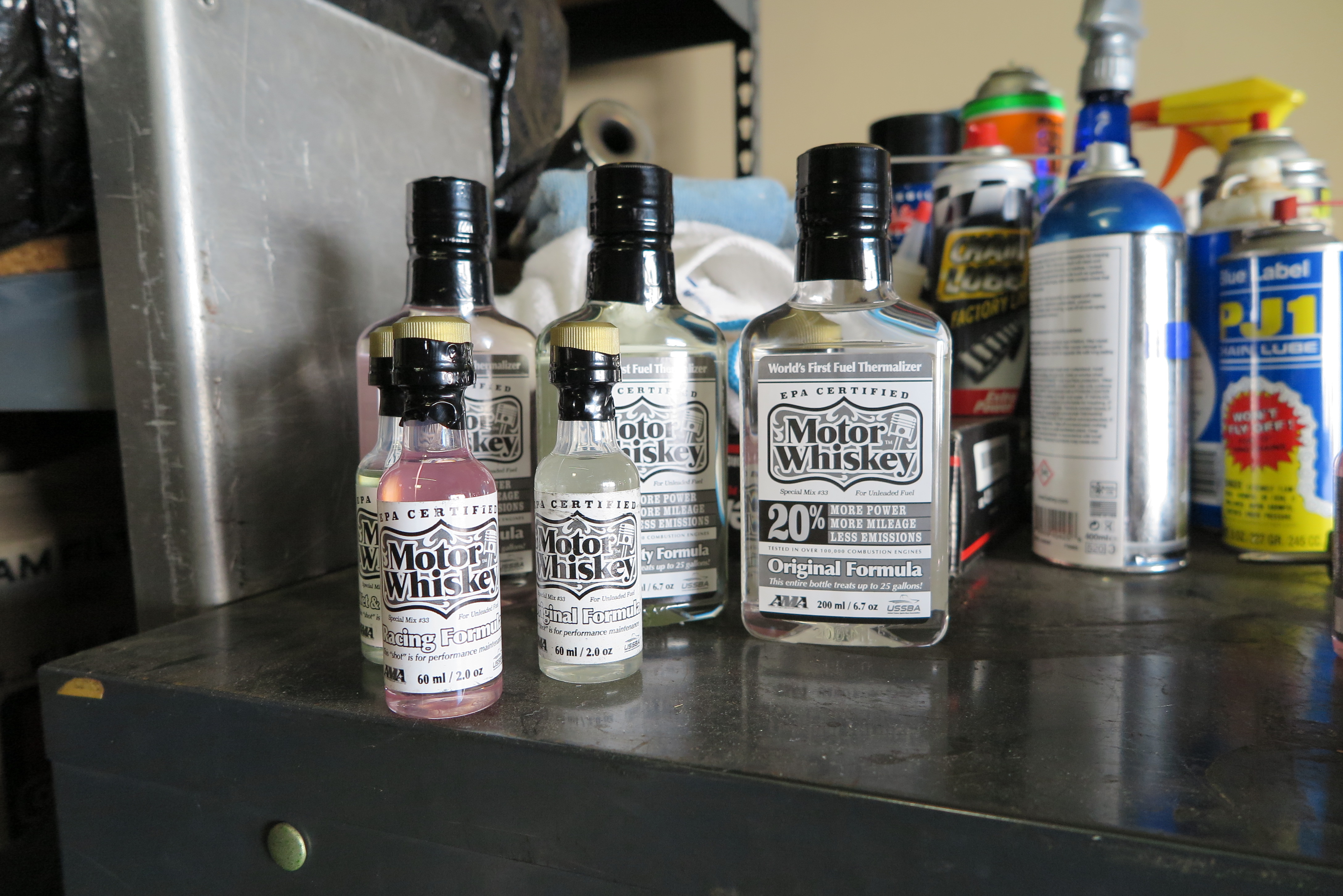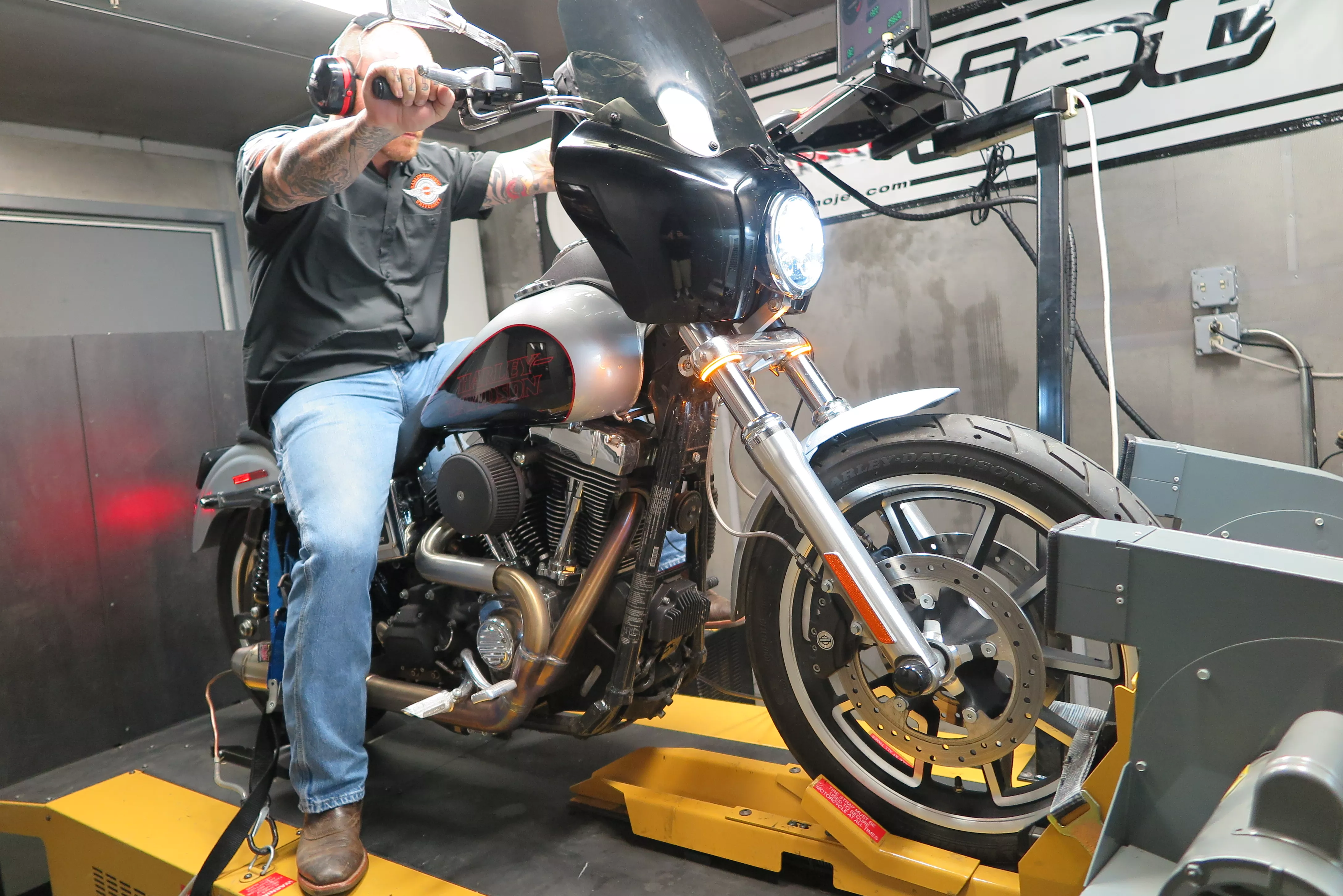Putting Motor Whiskey to the test

Time to get this hog all liquored up.
Photo: Hot Bike Staff
Yes, I have seen and tried many fuel additives offering untold claims of horsepower that never seem to fully materialize. But the folks at Motor Whiskey were confident that they indeed have an affordable horsepower booster in a bottle.
But before we pour a shot and crack open the throttle, let’s first talk about the fuel we put in our bikes. Back in the good old days, the conventional gasoline we used to fill our tanks with had a flash point of minus 45 degrees Fahrenheit. Now the modern reformulated “clean” gasoline has a higher flash point due to being infused with 180-proof grain alcohol, which is also known as ethanol. And ethanol’s flash point comes in at 61.88 degrees Fahrenheit.

There are three different kinds of Motor Whiskey: Original, Wet and Dirty, and a Racing Formula. Each 2-ounce shot is good for a tankful of fuel.
Photo: Hot Bike Staff
You might think hotter is better, but not in the case of our Harley motors. This higher flash point actually creates an unbalanced amount of combustion within each cylinder by burning faster than gasoline alone. The result is unequal pressure downward on each of the pistons, and in those milliseconds during the combustion process this creates power-robbing vibrations along the crank.
How does Motor Whiskey work to solve that and make power, you ask? Well, Motor Whiskey is a Hydrocarbon Replacement Thermalization technology. In layman’s terms this pour-in fuel treatment has proprietary properties that fight the high heat of ethanol-additives and provides a better-balanced combustion process just like we had back in the day therefore boosting engine performance.
RELATED | MORE TECH

All manufacturer claims aside, I put Motor Whiskey to the test on Hot Bike’s in-house Dynojet dyno and found that after adding it to the tank it did indeed net us a 4-hp increase using 91 octane fuel on a stock 2015 H-D Twin Cam 103 motor.
Photo: Hot Bike Staff
If 4 more ponies doesn’t sound like much, I can tell you that this $5 treatment gives an amazing bang for your buck, as I have tested exhaust systems going for a $1,000 or more that have given less performance.
Source
See our Tales from the Dyno series where we put the latest and greatest hop-up parts to the test.







